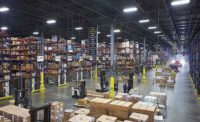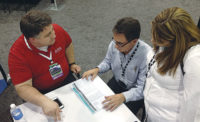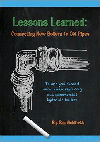Whether you work in the warehouse, in the factory, in the pipe yard or spend all day making deliveries in a truck, functional apparel plays a key role in performance. That’s what manufacturers of professional clothing apparel say when they were asked about the latest trends in that space.
“These professionals work long, hard hours, so when they get dressed in the morning, they should feel confident that their clothing protects and performs while being comfortable,” says Brian Ciciora, founder and CEO of professional apparel manufacturer Truwerk. “Traditional work wear, while it may be familiar to many, is bulky and misses the mark when it comes to keeping professionals comfortable and healthy.”
Ciciora notes the bulk he is referencing is intentionally used to help combat cold temperatures and dangerous debris on jobsites. “But in providing durability, it compromises movement and can fail to regulate body temperature,” he says. “We know from our customers that physically demanding work in restrictive clothing makes work more difficult, which leaves them tired at the end of the day and increases the likelihood of accident and injury.”
ADDRESSING THE ELEMENTS
James Grow, director of product marketing at tool manufacturing heavyweight Milwaukee Tool, says keeping the changing weather elements in mind is key when designing clothing for pro workers.
“Oftentimes, tradesmen need to be able to stay out in the elements longer in order to work more efficiently,” he says. “During jobsite research, it was clear that inappropriate clothing and layering can negatively impact user productivity. Across the board, fabric technology continues to push the limits in all industries, and we are now seeing the crossover into work wear. Users are looking for comfort, mobility and functionality, all while maintaining professionalism. To meet these user needs, we recently introduced a lineup of comfortable, durable work wear that is built to conquer real work.”
Along those same lines, Grow says new material technologies have allowed manufacturers to introduce innovation to work wear with a focus on addressing common challenges on the jobsite. “Construction apparel that can survive better and deliver greater protection from damaging elements is crucial,” he notes. “Construction apparel is a critical need on the jobsite, but with the constant exposure to harsh environments, productivity can suffer. Users often encounter damaging elements, tears and abrasions, and limited movement and flexibility with current work wear offerings. We took these common user frustrations into consideration to create work wear that provides a greater return on investment and improves the user’s ability to work.”
LISTENING TO THE CUSTOMER
Ciciora says innovation cannot happen without major involvement from customers. He adds Truwerk has taken things to the next level by taking inspiration from elite mountain climbers and military personnel. “We have integrated technical performance fabrics that breathe well in other professions and pursuits into an active-layering system for work wear,” he explains. “These fabrics allow for complete range of motion and they keep body temperature regulated. We focus on keeping the industrial athlete as safe as possible by controlling the sub-climate zone between the athlete and the work wear. Every product is engineered to enable the wearer to perform at the highest level with advanced functionality, fit, comfort and style.”
Grow says Milwaukee, like it does with its tools and accessories, also sinks significant time into customer feedback and then uses that data to come up with the latest in apparel innovations. “Each year, we spend hours on the jobsite working with users to understand their needs and frustrations,” he says. “We focus on providing year-round solutions to our core Milwaukee users, prioritizing protection from the elements, tear and abrasion resistance, and movement and flexibility. We are committed to using research insights and purposeful innovation to deliver products that improve the overall user experience and outlast current solutions on the market.”
WOMEN’S CLOTHING
Kate Day is the co-founder and brand director of Dovetail Workwear, a company that manufactures women-specific work wear. She says there continues to be a huge gap in fit, function and durability when it comes to women’s work apparel in the PHCP-PVF industry.
“There are so many pain points and problems,” she says. “Clothes still are based on men’s sizes and that’s a major issue. In the apparel industry, it’s known as a ‘pink it and shrink it’ approach. For example, if your pants aren’t fitted properly at the waist for a woman’s body, you are going to get issues such as ‘plumber’s crack,’ when you bend over at the waist. And if you are carrying a bunch of tools, they will pull down at the waist and encumber how you move. Women’s work wear isn’t a well-developed category. Typical women’s work wear comes in thin, less durable fabric without the performance comparable to men’s fabrics. Depending on their line of work, some women tell us they own workpants that wear out as quickly as four to six weeks.”
And just like Milwaukee Tool and Truwerk, Day says Dovetail is doing something about this issue. “We start by listening,” she says. “Every style we make is developed to solve a real-world professional woman’s problem and paint points within her occupation and activity. We have an extensive network of wear testers who help us refine each piece of work wear long before it goes to market, and we problem-solve for each of the fit, function and durability aspects of every product we put out.”










